- Back to Home »
- Bergen: Terrorists target the military
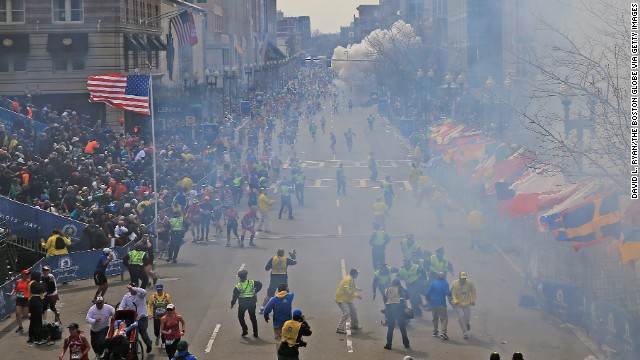 The bombings in Boston on Monday, April 15, 2013, serve as a cruel reminder that the U.S. has seen other terror attacks on home soil. See all photography related to the Boston bombings.
The bombings in Boston on Monday, April 15, 2013, serve as a cruel reminder that the U.S. has seen other terror attacks on home soil. See all photography related to the Boston bombings. 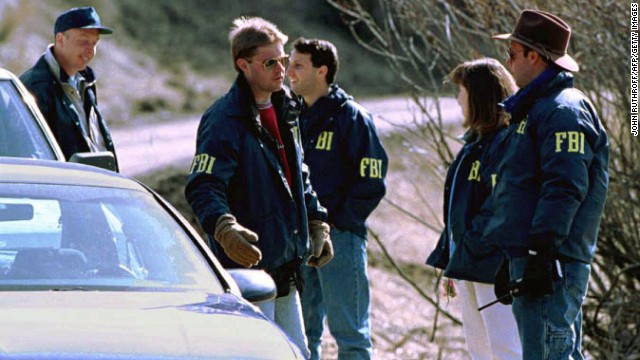 A suspect known as "The Unabomber" kept authorities at bay for years during his long, random terror spree. Here, FBI agents guard the entrance to the property of Ted Kaczynski on April 5, 1996, in Lincoln, Montana.
A suspect known as "The Unabomber" kept authorities at bay for years during his long, random terror spree. Here, FBI agents guard the entrance to the property of Ted Kaczynski on April 5, 1996, in Lincoln, Montana.  Justice finally catches up with Ted Kaczynski, who is escorted by U.S. marshals outside Sacramento County Federal Court in California in May 1998 after receiving life sentences for his crimes.
Justice finally catches up with Ted Kaczynski, who is escorted by U.S. marshals outside Sacramento County Federal Court in California in May 1998 after receiving life sentences for his crimes.  Firefighters and rescue crews work outside the World Trade Center after an attack on February 26, 1993. This bombing shocked the nation, which had no way to realize that much worse was to come at this location in less than decade.
Firefighters and rescue crews work outside the World Trade Center after an attack on February 26, 1993. This bombing shocked the nation, which had no way to realize that much worse was to come at this location in less than decade. 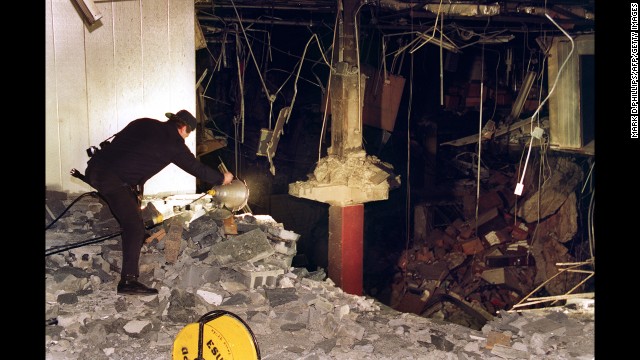 A police photographer helps document the bombing of the underground parking garage at the World Trade Center, which killed six people in 1993.
A police photographer helps document the bombing of the underground parking garage at the World Trade Center, which killed six people in 1993. 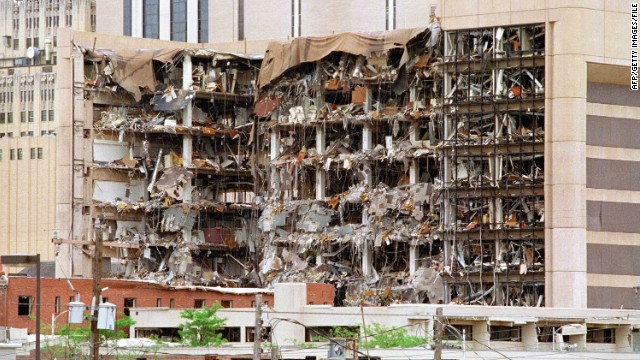 The north side of the Alfred P. Murrah Federal Building in Oklahoma City shows the devastation caused by a fuel-and fertilizer truck bomb detonated on April 19, 1995. At the time, it was the worst terror attack on U.S. soil, killing 168 people.
The north side of the Alfred P. Murrah Federal Building in Oklahoma City shows the devastation caused by a fuel-and fertilizer truck bomb detonated on April 19, 1995. At the time, it was the worst terror attack on U.S. soil, killing 168 people. 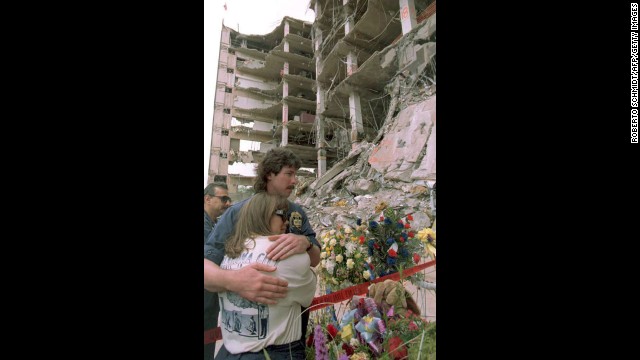 Employees of the Bureau of Arms, Tobacco and Firearms hug in front of the wreckage of the Murrah Building. Americans soon learned one of their own -- not foreigners bent on U.S. destruction -- was responsible for the carnage.
Employees of the Bureau of Arms, Tobacco and Firearms hug in front of the wreckage of the Murrah Building. Americans soon learned one of their own -- not foreigners bent on U.S. destruction -- was responsible for the carnage. 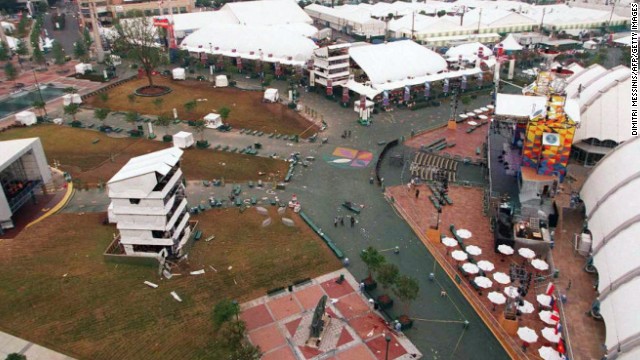 Atlanta was the excited and elated host of the 1996 Summer Olympics when a bomb went off at Centennial Olympic Park on July 27. Two people were killed and 111 were injured by the blast. It would not be the last time that a U.S. sports venue would find itself the target of terrorism.
Atlanta was the excited and elated host of the 1996 Summer Olympics when a bomb went off at Centennial Olympic Park on July 27. Two people were killed and 111 were injured by the blast. It would not be the last time that a U.S. sports venue would find itself the target of terrorism.  September 11, 2001. Americans need no reminder of the significance of this terrible date. Here, people flee the World Trade Center before its devastating collapse. See Ground Zero now.
September 11, 2001. Americans need no reminder of the significance of this terrible date. Here, people flee the World Trade Center before its devastating collapse. See Ground Zero now. 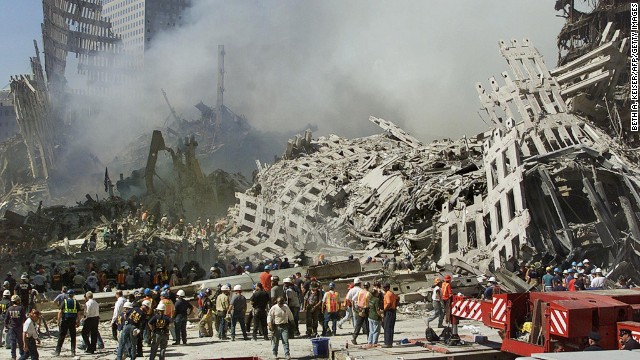 Rising from the ashes of ruin: Rescue workers continue their search for victims as smoke still pours from the rubble of the World Trade Center on September 13, 2001. The death toll at ground zero: 2,753.
Rising from the ashes of ruin: Rescue workers continue their search for victims as smoke still pours from the rubble of the World Trade Center on September 13, 2001. The death toll at ground zero: 2,753.  Soldiers comfort each other at the Fallen Soldier Memorial at Fort Hood, Texas, on November 10, 2009, during a ceremony honoring the 13 soldiers and civilians killed in a shooting rampage five days earlier.
Soldiers comfort each other at the Fallen Soldier Memorial at Fort Hood, Texas, on November 10, 2009, during a ceremony honoring the 13 soldiers and civilians killed in a shooting rampage five days earlier.  In the darkness of terror attacks, Americans find the light. Here, officers hold candles during a vigil for those killed at Fort Hood.
In the darkness of terror attacks, Americans find the light. Here, officers hold candles during a vigil for those killed at Fort Hood. 
1

2

3

4

5

6

7

8

9

10

11

12
- Major Nidal Malik Hasan says he killed U.S. soldiers to protect Taliban leaders
- Peter Bergen: Fort Hood massacre was part of a trend of terrorists targeting military
- It prompted new restrictions and security procedures at the base, he says
- Since 9/11, 21 people have plotted to attack U.S. soldiers or military installations
Editor's note: Peter Bergen is CNN's national security analyst, a director at the New America Foundation and the author of "Manhunt: The Ten-Year Search for bin Laden -- From 9/11 to Abbottabad".
(CNN) -- At a hearing on Tuesday, Maj. Nidal Malik Hasan, the Army psychiatrist accused of killing 13 people at Fort Hood, Texas, in 2009, for the first time publicly explained that he was motivated by a desire to protect the leadership of the Taliban -- in particular, Mullah Mohammed Omar, the overall leader of the movement.
Prosecutors say that as Hasan opened fire on a room full of soldiers filling out paperwork for their upcoming deployments to Afghanistan and Iraq, he shouted "Allahu Akbar! (God is great!)"
Maj. Nidal Hasan can represent himself
The massacre at Fort Hood is part of a trend of "homegrown" al Qaeda-inspired terrorist attacks and plots against U.S. military targets.

For those individuals who buy in to the late Osama bin Laden's key claim that the U.S. is at war with Islam, American soldiers who are fighting wars in Muslim countries make compelling targets. Indeed, more than a quarter of all the jihadist extremists who have carried out or plotted attacks inside the United States since the 9/11 attacks have targeted the U.S. military.
Since 9/11, 21 people have plotted to attack American soldiers or military installations, according to a count by the New America Foundation.
Before he went on his rampage at Fort Hood, Hasan had contacted the radical Yemeni-American preacher Anwar al-Awlaki over the Internet to ask whether it would be permissible for a U.S. soldier to kill his comrades in the name of Islam.
Al-Awlaki's responses were noncommittal, and although the conversations were a red flag to some law enforcement officials who were monitoring these communications, those officials did not alert the military.
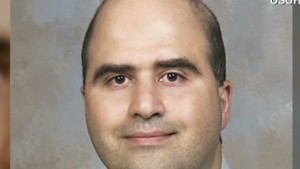 Toobin: Hasan wants suicide by judge
Toobin: Hasan wants suicide by judge 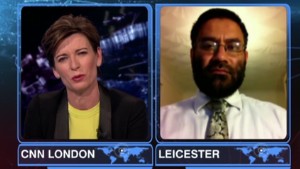 Former jihadist calls attack 'cowardly'
Former jihadist calls attack 'cowardly' A Pentagon report released after Hasan's attack found that the military's official relations with the FBI's Joint Terrorism Task Forces were "inadequate," which might have contributed to the failures to communicate about the threat some law enforcement officials suspected Hasan might pose.
Here are some other examples of plots or actions that targeted the military:
• A few months before the Fort Hood attack, another jihadist extremist killed a U.S. soldier at a military recruitment center in Little Rock, Arkansas. Abdulhakim Mujahid Muhammad, a convert to Islam whose preconversion name was Carlos Bledsoe, had also attracted attention from federal law enforcement. Despite being questioned by the FBI about a suspicious trip he had recently taken to Yemen, Muhammad was able to obtain a semiautomatic rifle, a pistol and ammunition, as well as the ingredients for a Molotov cocktail.
• A month after Muhammad attacked the military recruitment center in Arkansas, a Muslim convert named Daniel Patrick Boyd was arrested along with six other men, accused of leading a terrorist cell that plotted to attack the Marine base at Quantico, Virginia, outside Washington. Boyd had a history of run-ins with the law, but his group still managed to amass weapons and conduct paramilitary training before they were discovered.
• A similar 2011 plan involved Walli Mujahidh, who plotted with Abu Khalid Abdul-Latif to use grenades and machine guns to attack military recruits at an office complex in south Seattle as revenge for purported atrocities by U.S. soldiers in Afghanistan.
• Four years earlier, a group of Muslims living in southern New Jersey who were virulently opposed to the Iraq War told a government informant they were plotting to kill soldiers stationed at the nearby Fort Dix army base.
In the wake of the attack there, Fort Hood tightened restrictions on who was allowed into the facility, posted more armed guards in strategic locations around the base and implemented the random searching of containers.
An extensive independent review to find the "lessons from Fort Hood" focused on identifying radicalization within the U.S. armed forces, a phenomenon that poses a particularly grave threat because of soldiers' access to weapons and secure military facilities. The review also identified some of the procedural problems that led to the military's failure to prevent the Fort Hood attack.
Following the review, then-Secretary of Defense Bob Gates issued a directive ordering the implementation of 47 recommendations to improve "force protection" at military bases in the U.S.
These included giving military personnel better guidance on identifying suspicious or radical behavior by their comrades, establishing better relations between the Pentagon and the FBI's Joint Terrorism Task Forces and improving communication mechanisms for sharing real-time crisis information across military commands and installations.
But while establishing methods to identify extremists is a somewhat feasible goal in a regimented, closely monitored system such as the military, it is not as easy for authorities to do so in the broader community, particularly when the individuals seem to be "lone wolves" who are not part of a formal terrorist group.
Two attacks last month on soldiers living in the West fit this category.
On May 22, two men rammed a car into British soldier Lee Rigby as he was walking down a street in suburban London. They then hacked at him with a meat cleaver and left his body in the road while a bystander filmed one of the attackers. The slaying was justified as "an eye for an eye, a tooth for tooth ... because Muslims are dying daily."
The following weekend, in what might have been a copy-cat attack, a young Muslim convert who investigators believe "acted in the name of his religious ideology" stabbed a 25-year-old French soldier in a Paris suburb.
He was likely targeted because in recent years, French soldiers have served in Muslim countries such as Afghanistan and Mali.
The suspect, identified only as Alexandre D., first came to law enforcement's attention when he was questioned briefly in 2009. French intelligence services reportedly became aware of the suspect's increasing radicalization in February of this year.
Although there have been no successful attacks on U.S. military targets since the Fort Hood and Little Rock shootings in 2009, six of the 15 jihadist extremists who plotted to attack inside the United States in the past two years were targeting American soldiers or military installations.
The trial of Hasan serves as a reminder that American soldiers will remain squarely in the crosshairs of those few individuals in the United States who are motivated by al Qaeda's ideology.
But in the wake of the Fort Hood massacre, the Pentagon has made a concerted effort to identify and address the government failures that allowed Hasan to carry out his attack, making another "insider" attack on a military facility in the United States significantly less likely than it was four years ago.
Follow @CNNOpinion on Twitter.
Join us at Facebook/CNNOpinion.







